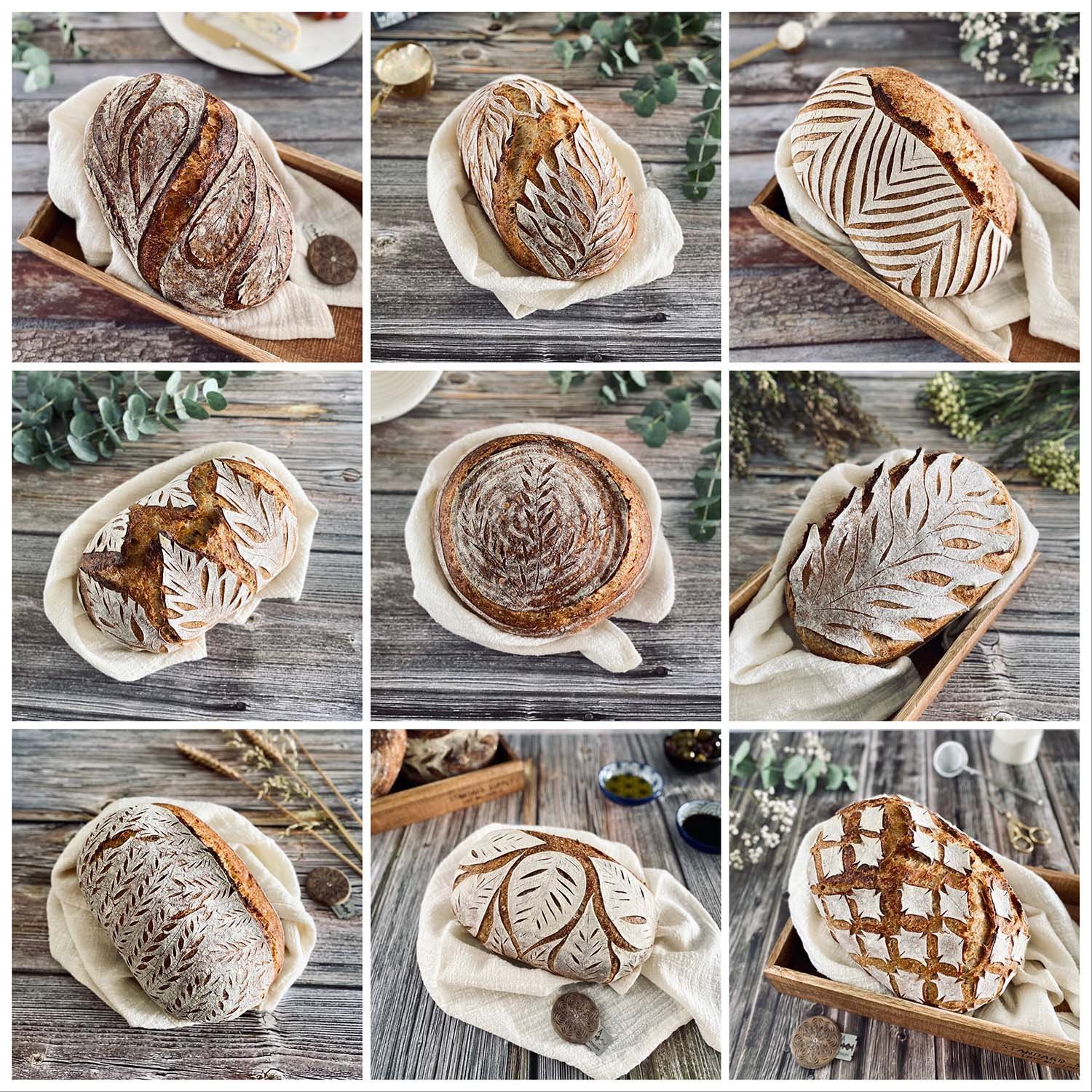Bread Art—9 Tips To Improve Your Scoring
I enjoy every step of bread making, from kneading the dough to shaping. But by far my favourite part is the scoring—there is something so satisfying about it! And while I may often use the same bread recipe, I try to use different scoring designs as much as possible.
When it comes to pattern ideas, I usually draw them on paper first. I may come up with something new at any point during the week, so I just draw what I have in mind and save it for later. This way I always have some designs ready to use when it’s time to score.
Also, drawing on paper first is really useful to visualise the final design, and the sketch can act as a reference during the actual scoring.
Needless to say, not all designs will work, while sometimes something very simple on paper looks absolutely stunning on baked bread! So explore the options and use your imagination.
I get so impatient waiting for the moment when I can open the lid of the Dutch oven (half way through the bake)! The bread will always be different and unique—even if you use the same recipe, the same flour, the same hydration, and even the same scoring pattern. No two breads are the same. And that’s so exciting! Sometimes the result may not be exactly what you’re expecting, and that’s OK—you’ll always learn something new in the process. In fact, the more you practice, the more you’ll understand what works and what doesn’t, helping you improve your skills over time.
If you want to give it a go, check the scoring tips below to get you started. I also wanted to share with you a collection of some of my favourite designs (in the photo collage) and a couple of video tutorials—because to better visualise it, it is best to see the pattern being created live.
And there is plenty more on our YouTube channel—subscribe to stay in the loop!
Scoring tips and tricks
Give the dough a fresh(er) look. Remove the excess of flour after the cold proof, dust the dough with fresh flour and smooth the surface before scoring. I find rice flour better for creating contrast, but you can use regular or bread flour if you prefer.
Use the right scoring tools. It is important to use a very sharp blade/lame, as this will have a big impact on the look of the scoring. And you’d be surprised how quickly the razor blade will get dull, so replace it often—ideally as soon as you see it dragging on the dough. For all of our scoring we use Wire Monkey lames de boulanger. They are super functional, high quality and beautifully made. Wire Monkey offers several different models to choose from—you can find the full range here (10% discount will be applied at check out).
Freeze before you score. When scoring a pattern that will take time to complete, freeze the dough for 30min before scoring. This will prevent the dough from ‘deflating’ before you bake it.
Be gentle with the dough, but make swift and confident slashes, and don’t press down on the dough.
Use shallow cuts when making a detailed or more intricate pattern, and one or a few deeper cuts (depending on your design)—to allow the bread to rise and expand during baking.
Clean the blade between slashes, especially if you are scoring a detailed pattern. This will help to keep the blade sharp and prevent dragging.
Use different scoring patterns for different bread shapes. The design for a boule (round bread) may not work well on a batard (oval-shaped loaf) and vice versa.
Try different flour types and hydration levels and observe how this affects the scoring. Higher hydration will make the dough much softer, which may not be ideal for very detailed scoring. Flour type will also have a big impact—rye flour for example is low in gluten and it lacks elasticity, which will affect how the dough expands in the oven.
Create and experiment. Take notes, photos or videos, and try again! And most importantly, have fun!
If you have any questions, feel free to use the comment box below.
Happy scoring! 👩🏻🍳🌾🤍
Extra tip: these Sourdough Fever stencils will elevate your bread art to the next level, check them out!




